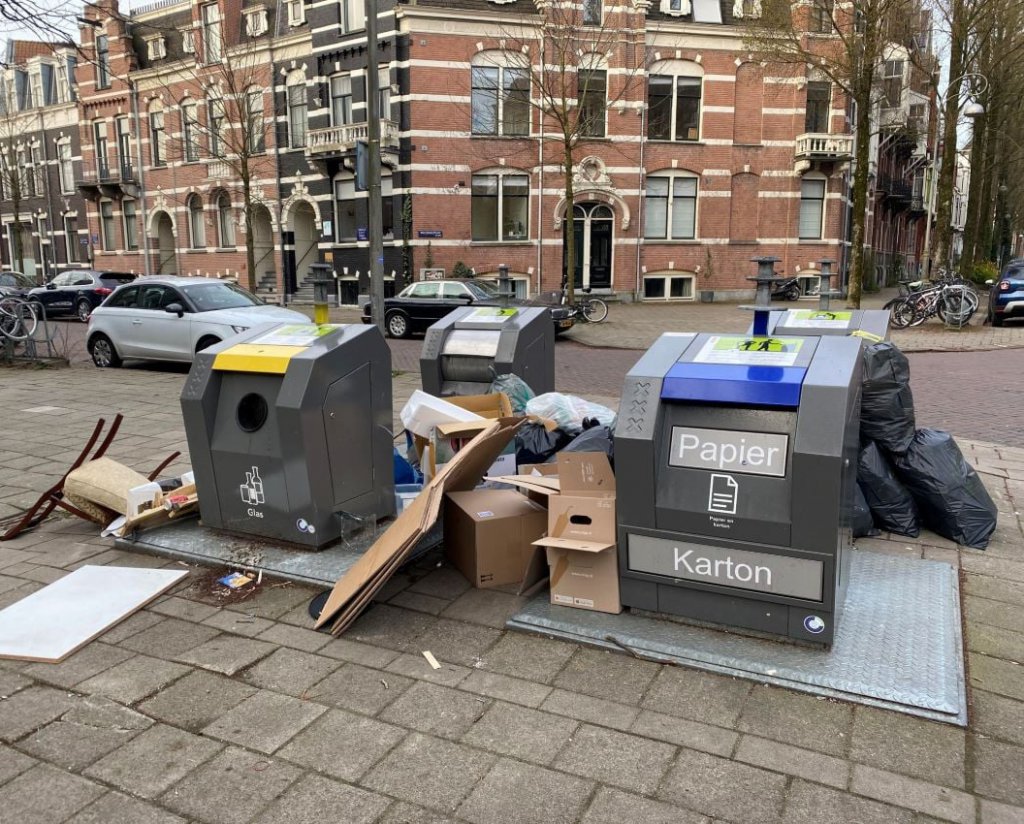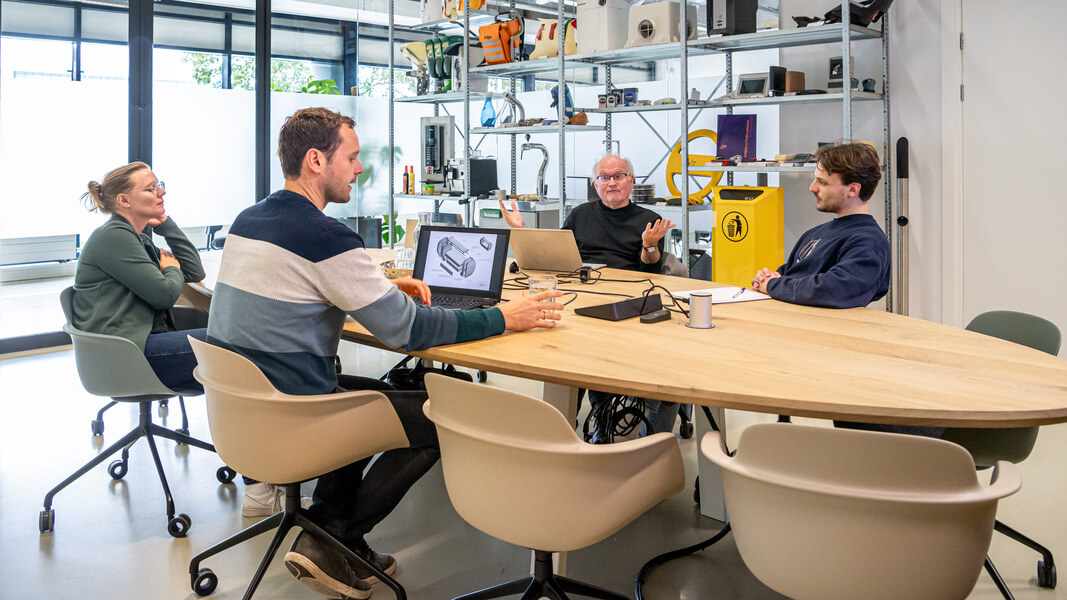Seven solutions to cardboard challenges for the municipality of Amsterdam

The Design Challenge
Door de toename in kartonafval raken de papiercontainers in Amsterdam steeds sneller vol. Één van de redenen is dat kartonnen dozen vaak zeer groot zijn. Overvolle (of verstopte) containers leiden ertoe dat bewoners hun afval er soms naast zetten. Het resultaat is frustratie, zwerfafval en een lelijk straatbeeld. Ook kost het de gemeente veel extra tijd en geld. Om die reden klopte gemeente Amsterdam bij WeLLDesign aan met de vraag of wij oplossingen voor dit probleem konden verzinnen.
The ideas presented below are currently being considered by the City of Amsterdam.
Our approach
To fully understand the problem, we interviewed all stakeholders: from fleet managers to residents, and from container “adopters” to municipal policymakers. This led to a cause-and-effect diagram that clearly outlines all factors and consequences. Based on this, we organized a brainstorming session with our team. Together with the city, we selected a range of ideas to develop into actual concepts.


Modifications to the container
From our interviews with residents and city employees, we concluded that the design of the container structures is suboptimal. A logical direction was therefore to explore solutions within the container structures. The focus here was on making adjustments to existing containers that could work in the short term with minimal investment.
Technical solutions

1. Streamlining
Upon inspecting the container structures, we found that there are many edges perpendicular to the direction of disposal. We suspect that cardboard frequently gets stuck against these edges, causing blockages.
By adding elements that improve streamlining, we can partially resolve this problem. This is a relatively simple adjustment, as it only requires adding items, like stainless steel plates or 3D-printed conical shapes, to existing containers. We anticipate that this will significantly reduce the number of blockages.
2. Foot pedal
Currently, it’s difficult for residents to solve a blockage in the container, as most people prefer not to reach into it with their hand. However, pushing cardboard down during a blockage is a proven solution. Based on this principle, we devised a concept involving a foot pedal. This foot motion is mechanically converted into a pushing motion, compressing the cardboard, allowing it to fall further down in the event of a blockage. This concept makes it easy for residents to push cardboard further down without having to reach into the container.


3. Changing the disposal direction
One cause of blockages seems to be cardboard sticking against the back of the container structure; cardboard is disposed of almost horizontally, and long pieces may sometimes fail to make the turn downward. This concept involves changing the disposal direction of the cardboard.
By creating an extra opening in the shape of a narrow slot, larger pieces of cardboard could more easily be deposited. To encourage people to use the upper opening for larger pieces, this opening is slightly wider than the regular one.
Encouraging proper behavior
Another approach to solving the problem is encouraging proper behavior. Since the city has already implemented several temporary interventions, our focus was on achieving a lasting effect. We developed several concepts, each addressing a different behavioral aspect.
Behavioral Solutions


4. Projecting the bins status
Arriving at a container with arms full of waste only to find it full is understandably frustrating. In “the heat of the moment,” people are more likely to leave their waste beside the container.
For this reason, we developed a concept to improve expectation management. Laser light projections on the sidewalk indicate whether the container is “available” or “full.” A sensor updates the laser light in real-time, ensuring accuracy.
This concept is especially useful for containers near high-rise buildings. By viewing the projection from their apartment, residents can avoid unnecessary trips to dispose of waste.
This idea also works for low-rise buildings: knowing in advance that a container is full increases the likelihood that residents will either turn back or walk to the next container.
5. Lighting
In the Netherlands, it’s often dark in the evenings, especially in winter. And evenings are precisely when people frequently dispose of waste. The reduced visibility at night decreases social control, as people feel less observed, which likely increases the number of instances of waste left beside the container in the evening.
Lighting at the container site could make a positive difference, serving two purposes: it’s helpful to clearly see when disposing of waste, and increased visibility creates a positive pressure to dispose of waste responsibly.


6. Transparency
Currently, residents often don’t realize when they’re causing a blockage. They may think the container is full, but it’s often due to a blockage near the top.
By making it possible to see inside the container structure, people will more quickly realize when there’s a blockage. The container will no longer be a “black box,” which could increase awareness of the negative effect of depositing large cardboard boxes.
Implementation is relatively simple, as only the side door needs to be replaced with a transparent version, potentially made from durable polycarbonate to ensure it’s vandal-proof.
7. The "Cardboardboat"
One of the problems surrounding paper recycling containers is the lack of social control. Improper behavior (placing waste beside the container, not flattening cardboard) is rarely corrected. The concept of the “cardboard boat” was inspired by the “old paper container on Saturdays in town.” Residents could bring their cardboard to a boat with a set route, docking at specific locations at specific times.
This alternative approach to cardboard collection could create multiple benefits: social control, neighborhood cohesion, friendly interactions, and likely a cleaner recycling stream.

The next steps
The City of Amsterdam is currently reviewing these concepts.
A potential next step could involve a pilot project for one of the concepts, measuring its impact by comparing the effects after implementation with a reference group of containers.
What is your design challenge?
Do you have a design challenge or issue? We are ready to get started for you. Contact us to explore the possibilities.



